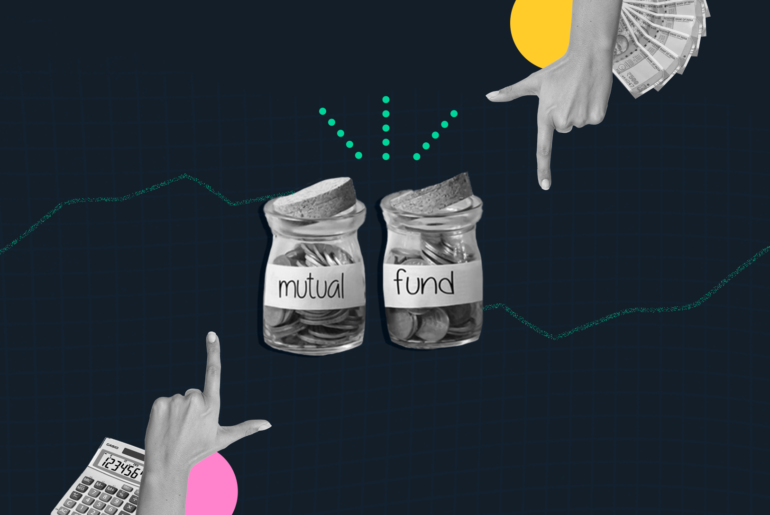Last Updated on May 24, 2022 by
The Goods and Services Tax (GST) was implemented by the Government of India on 1 July 2017. It replaced a large number of indirect taxes. Under GST, goods and services are taxed under different tax slabs. In India, there are 5 tax slabs currently – 0%, 5%, 12%, 18% and 28%. With the exception of petrol and petroleum products, alcohol, and electricity, all goods and services are taxed in accordance with the slabs.
Table of Contents
One nation, one tax
GST was introduced in India in place of 16 different and cumbersome taxes like sales tax, VAT, excise duty, etc., and 23 types of cesses that were previously being imposed. This move was implemented in order to prevent the cascading effect of taxes, tax evasion, double taxation, and corruption. The goal was simple – One Nation, One Tax.
Unlike other countries which have adopted GDP, India did not opt for the 1 or 2 slabs tax system. This was done in consideration of the inflationary pressures such a decision could cause. Fortunately, the one major worry that inflation would increase due to GST did not happen.
However, there were a few difficulties too. Some believe that the Government rushed into implementing GST and instead should have opted for a slow and steady process of integrating it. An increase in the number of compliances and the digitization of everything made it hard for some uninformed people to conduct business.
While the multi-slab system might have been necessary, it also complicated the taxation system, creating a general preconception that GST was a mess.
On what basis are goods and services taxed?
The Government introduced 5 different tax slabs to ease the burden of indirect taxes.
0% or no tax
No tax is imposed on regular consumables and basic necessities goods like milk, butter, flour, salt, etc. Also included are services offered on Pradhan Mantri Jan Dhan Yojana and Basic Savings Bank Deposit, and on hostels which charge less than Rs. 1,000 per day, etc.
5%
Air travel, the printing of newspapers, leasing of aircraft, tour service operators, etc.
12%
Rail transportation (for services by any other than Indian Railways), movie tickets that cost less than Rs. 100, hostels which charge between Rs. 1,001 to Rs. 7,500 per day, food/drinks without A/C, etc.
18%
Food/drinks at venues with a liquor license and/or AC, outdoor catering, theatres and drama, movie tickets over Rs. 100, monitors, speakers, notebooks, furniture, and so on.
28%
Betting and gambling, 5-star establishment services, sporting events like IPL, washing machines, automobiles, tobacco, aerated drinks, water heater, personal care items, etc.
Note: This is not an exhaustive list.
Usually, the goods are placed into slabs according to the level of necessity/luxury associated with them. Most basic necessities are placed in the 0-5% tab, while luxuries are placed in the 18-28% tab. Another point to be noted is that GST rates are not uniform in a sector since different goods from the same sector/industry are charged different rates.
Recent GST updates
GST slabs and rates on different goods and services are revised periodically. Certain new changes have been made that come to effect from 1 January 2022. Read on to find out more about the changes.
The following key goods and services have changed their GST rate effective from 1 January 2022.
- The GST rate on textiles (knitted fabrics, knitting, saree falls, embroidery works, curtains, bed linen, home furnishings, and dyeing services) has been increased from 5% to 12%. The industry is already suffering through increased input costs. This move is expected to hinder the industry’s growth.
- Tax on carriages for disabled persons will be reduced from 18% to 12%.
- E-commerce operators are now liable to pay GST on delivery and transport services. Companies like Zomato, Ola, Swiggy, etc., will be affected.
Changes made in the 45th GST council meeting
The taxes on the following goods and services were decreased:
| Item | Old tax rate | New tax rate |
| Import of life-saving drugs like Viltepso or as advised by an appropriate government department | 12% | Nil |
| IGST on goods sold at Indo-Bangladesh border | Applicable rate | 0% |
| Air and water transportation of goods abroad extended up to 30 September 2022 | 0% | 0% |
| Paid national permit grants to goods carriages | 18% | 0% |
| Skill enhancement courses ( for when the state/central government funds 75% or more of the expenditure) | 18% | 0% |
| Services on the 2022 AFC Women’s Asia Cup | 18% | 0% |
| ‘Keytruda’ cancer treatment drug | 12% | 5% |
| Biodiesel, sold for the purpose of blending with diesel | 12% | 5% |
| Rice grains for the Integrated Child Development Services (ICDS) Scheme, etc. | 18% | 5% |
| Retro fitment kits in carriages for the disabled | Applicable rate | 5% |
Taxes on the following goods and services were increased:
| Item | Old tax rate | New tax rate |
| Polyurethanes and other plastics wastes | 5% | 18% |
| Cartons, bags, boxes, paper packing containers, etc | 12-18% | 18% |
| Paper products like cards, printed catalogs, etc specified under Chapter 49 | 12% | 18% |
| Entertainment sector-related services like licensing, broadcasting, and showing original films, television programs, radio, sound recordings, etc. | 12% | 18% |
| Printing and reproducing recorded media | 12% | 18% |
GST rate corrections for inverted tax structure:
| Item | Old tax rate | New tax rate |
| Certain renewable energy tools and parts | 5% | 12% |
| Ores and metal concentrates | 5% | 18% |
| Pens (all types) | 12-18% | 18% |
| Railway parts, locomotives, and goods in Chapter 86 | 12% | 18% |
All of these changes came into effect from 1 October 2021 onwards.
Latest GST rates on key goods
- Food and beverages: All the goods have fallen down by one slab. For instance, foods that were taxed at 28% earlier will now be taxed at 18%.
- Daily-use household goods: Most goods have fallen down by one tax slab. For instance, goods that were taxed at 5% earlier are now not taxable at all.
- Educational items: Tax has been reduced from 28% to 12%.
- Agricultural Items: Goods taxed at 18% are being taxed at 12%, and goods that were being taxed at 12% are being taxed at 5%.
- Loans: GST is 18% for personal, home, and car loans.
Conclusion
Overall, there is a positive outlook towards GST and it has the potential to boost the economy, and also possibly shift up India’s position on the “ease of doing business” index as the taxation system faces more improvements. Also, the Government must take further care to ease the compliance process, reduce costs, and enable people from all facets to stay informed about GST.




